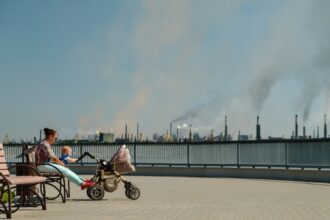Temporary hospitals play a vital role during emergencies, especially when local healthcare systems are overwhelmed. Whether due to natural disasters, pandemics, or conflicts, these facilities must be built quickly and work efficiently. But when extreme weather strikes—like hurricanes, floods, or heatwaves—building and maintaining these field hospitals becomes much more complicated. The success of such medical facilities depends on smart planning and careful engineering. Designing them to stand up to unpredictable weather is not just important—it’s necessary for saving lives.
Understanding the Challenge of Extreme Weather
Extreme weather events are becoming more common and more intense. Storms can tear down walls, heatwaves can overwork cooling systems, and floods can wipe out everything in their path. In such situations, people need fast and safe access to medical care, yet many traditional healthcare facilities may become unsafe or unusable.
Temporary hospitals must fill this gap. But to do so effectively, they must be designed to stay operational in these tough conditions. This means more than just setting up tents—it means considering every detail, from the location to the structure to the materials used.
Choosing the Right Location
A strong structure begins with a smart location. Areas that are low-lying or close to rivers are at high risk of flooding. Setting up a temporary hospital in such spots can put patients and healthcare workers in danger. Choosing elevated land, even if it’s slightly higher, can make a big difference.
Accessibility is also key. During emergencies, roads can be blocked or damaged. Temporary hospitals should be placed where they can still be reached by ambulances and supply trucks. This ensures that help can continue to arrive, even when conditions are difficult.
Designing for Strength and Stability
Temporary hospitals need to be built fast—but not at the cost of safety. Lightweight structures like tents and modular buildings are common, but they must be reinforced to handle high winds or heavy rain. Using steel frames or impact-resistant panels can improve stability without slowing down construction.
Anchoring systems are also important. In windy areas, field hospitals must be fixed firmly to the ground to prevent collapse. Engineers often use ground stakes or weighted blocks to keep structures secure, especially in hurricane-prone zones.
Additionally, planning for internal climate control is vital. In many cases, installing an environmental control unit helps regulate temperature and air quality, making the space safer for patients and medical personnel. This system becomes especially important in regions where humidity or extreme heat can interfere with both comfort and medical equipment.
Making the Inside Workable
While the outside of a hospital protects it from the weather, the inside must support proper care. In hot climates, ventilation and cooling systems are crucial. Overheating can affect both patients and medical equipment. In cold regions, insulation and portable heating must be part of the design to keep temperatures safe.
Power and water are just as critical. Generators, solar panels, and battery storage systems help keep the lights on and machines running. Water tanks and filtration units ensure a clean and steady water supply. These systems must be built in a way that they are shielded from the elements and easy to repair.
Speed Without Compromise
Emergencies demand speed. However, rushing construction can lead to dangerous shortcuts. Engineers and planners must use designs that are both quick to build and strong enough to last. Pre-fabricated units, which are built offsite and assembled on location, can meet both needs.
For example, during the COVID-19 pandemic, China built hospitals in just days using modular units. These structures were not only fast to set up but were also equipped with proper ventilation, plumbing, and safety systems. This approach showed what is possible with smart planning and efficient materials.
Planning for Future Risks
Extreme weather is not always predictable, but trends suggest that its frequency is increasing. Temporary hospitals must be designed with this in mind. Structures that can be adapted or upgraded over time are more useful than those meant for short-term use only.
Planners should also consider how the hospital can be used after the emergency is over. Can it become a clinic or a community center? Making these spaces flexible extends their value and justifies the resources spent on building them.
Training and Team Coordination
Even the best-built hospital is useless without trained staff and good coordination. Emergency response teams must know how to set up and run these temporary facilities in difficult conditions. This includes understanding the layout, knowing how to manage equipment, and being ready to face harsh weather.

Regular training drills and partnerships with local authorities make a big difference. When everyone knows their role, the setup runs smoother, and patient care improves—even in the middle of a crisis.
Conclusion
Temporary hospitals are a lifeline during emergencies, but they face extra challenges when extreme weather strikes. To work well, they must be placed wisely, built to withstand nature’s forces, and equipped to provide care in all conditions. Every decision—from the type of wall panels to the power source—matters. Strong teamwork, smart planning, and learning from past experiences are key to making these hospitals reliable. As weather patterns grow more severe, better designs and faster responses will become even more essential for protecting lives.








